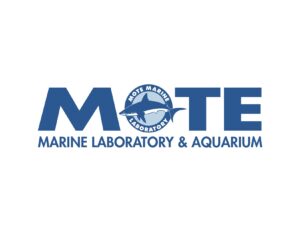Progress – Mote Marine Laboratory and Aquarium

Mote Marine Laboratory is a marine research organization based in Sarasota, Florida. Mote conducts groundbreaking research with more than 20 diverse programs focusing on today’s challenges as well as identifying and addressing future impacts.
The laboratory’s mission is to advance marine science and education, supporting conservation and sustainable use of marine resources. Mote is an independent, nonprofit marine research institution comprising world-class marine scientists committed to the belief that the conservation and sustainable use of our oceans begins with research and education. Find out more at https://mote.org
Red Tide
Mote Marine Laboratories, based in Sarasota, has provided extensive information on red tide and harmful algal blooms. Learn about findings from their research including how blooms form, how they dissipate into the environment and what effects they have on humans and marine animals.
Click here to dive deeper into Mote's Red Tide Research
Blue Holes
Blue Holes, deep underwater caverns, are ecological ‘hot-spots’ that have elevated chlorophyll concentrations (from algae) and diverse biological communities. Learn more about them here.
Florida's Blue Holes: Oases in the Sea | Full Episode (26:42)
Mote Magazine Article on Blue Holes - Hope Spot's Hot Spots
Coral Breakthrough!
August 2020- Coral Breakthrough -The first massive or mounding coral documented to spawn after being restored to the reef environment in Florida or the Caribbean is captured on video:
Mote's restored coral spawns on Florida's Coral Reef!
Activity
Click here to Launch a Lander
Objectives:
Participants will learn about the engineering design process as they hypothesize, design, and test a prototype to be used in exploring
the ocean floor.
Background:
One area of research Mote is involved in is ocean technology. Technology can help tackle some of the biggest challenges the ocean faces because they can go beyond the scope of human hands, divers and observation. Some examples include remotely operated vehicles (ROVs), drones, detectors, buoys, trackers, autonomously operated vehicles (AUVs) etc. Some of the technology deployed has helped describe the physical conditions after the Deepwater Horizon oil spill in 2010, detect harmful algal blooms at depth have been used to examine the chemistry and nutrient cycling between estuaries and the deep ocean.
Any questions? Please let us know and we'll do our best to get them answered during the Q&A session October 10th!
[ninja_form id=9]
BLUE-GREEN CONNECTIONS, INC. IS A 501(C)(3) NOT-FOR-PROFIT ORGANIZATION WITH REGISTRATION NUMBER CH59415. ALL GIFTS MADE TO THIS ORGANIZATION ARE TAX-DEDUCTIBLE TO THE EXTENT PROVIDED BY LAW. A COPY OF THE OFFICIAL REGISTRATION AND FINANCIAL INFORMATION MAY BE OBTAINED FROM THE DIVISION OF CONSUMER SERVICES BY CALLING TOLL-FREE (800-435-7352) WITHIN THE STATE OR BY VISITING WWW.FRESHFROMFLORIDA.COM. REGISTRATION DOES NOT IMPLY ENDORSEMENT, APPROVAL, OR RECOMMENDATION BY THE STATE.
© Copyright 2019-2020